The ZDMP project aims to offer an open Industry 4.0 environment where a new generation of developed zero-defect service applications will be available in a marketplace contributing to create an ecosystem. More information can be found on the ZDMP website under https://www.zdmp.eu/.
ZDMP has received funding from the European Union’s Horizon 2020 research and innovation programme under grant agreement No 825631.
AICRUM IT has been selected in the second subcall of the ZDMP Project and will create dynaVR – dynamic Twin for milling optimization and VR visualization – as an additional zComponent that will be integrated into the ZDMP Platform.

DynaVR CONCEPT
PRODUCTIVITY AND BUSINESS SUCCESS
The vibration data is processed, visualised, and analysed with the 3D representation of the workpiece in the virtual environment (via smart glasses). The data visualization in the VR environment occurs in two phases.
In the first phase, the data visualization is carried out using Mixed Reality devices such as Hololens 2. In this way, the operators can see in the field (production line), and in real time, the data provided by the different sensors of the machinery and analyse the situation to make decisions.
PRODUCTION TIME AND COST
The recreation of the industrial environment though VR provides the ability to reproduce unlimited situations, and experience different solutions to the problems that the machinery may have.

BENEFITS
The use of well-designed and well-tested ZDMP components ensures a smooth implementation of the acquisition and the storage of the data from machines. This a key process before processing the data.
Allows detecting potential risks for both machinery and operators, being able to simulate the real operation and condition of the machinery, without any type of risk and without stopping operations to carry out tests.
The digital reproduction of the industrial world is a reality today. The goal of VR is to create virtual environments by means of Digital Twins that are as realistic as possible. Simulation scenarios can be run to check if the actions to reduce vibrations lead to the desirable results before applying the changes to the real machinery. Additionally, while simulating real situations, operators acquire knowledge about the machinery without exposing them to any personal or machinery risk.
OBJECTIVES
Vibrations represent one of the most delicate problems in the production as they affect directly the quality of the manufactured products (eg. complex metal products via milling). The aim of dynamic milling optimization and VR visualization project (dynaVR) is to provide a IIoT cloud-based data storage, processing and analysis application for process vibrations. All data are collected and visualized based on a dynamics twin.
dynaVR helps at performing vibration measurements and analyses to identify or anticipate potential machinery malfunctions and take the corrective or preventive actions to limit and reduce vibrations and finally optimize production and deliver Zero-Defect quality products. dynaVR combines both IIoT and VR. While IIoT manipulates real-world objects digitally, VR makes the digital world seem realistic. VR helps engineers to feel immersed in a 3D environment, to visualise and analyse vibrations, and optimise decisions making. The specific objectives of dynaVR are:

Objective 1
Define the concept for dynamic milling optimization aligned with ZDM, verified at M2 through D1.

Objective 2
Set-up technical environment to run dynaVR, verified at M3 through D2.

Objective 3
Develop and test dynaVR services for IIoT cloud-based data storage, processing and analysis application for process vibrations, verified at M5 through D3a.

Objective 4
Integrate and validate dynaVR services with a pilot scenario in the aerospace sector and with EMCO milling machine at ZDMP Experimentation Facility, verified at M8 through D3b and D4a, D4b.

Objective 5
Enabling exploitation through ZDMP Marketplace, verified at M9 through D5.

This project has received cascading funding from the European Union’s Horizon 2020 research and innovation programme under grant agreement No 825631.



